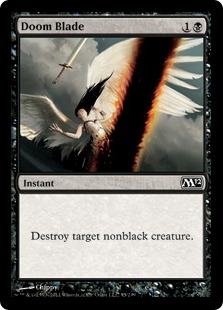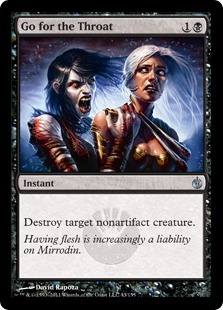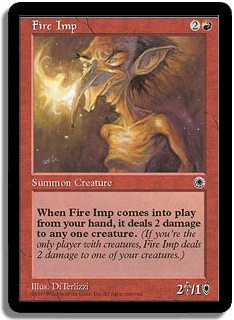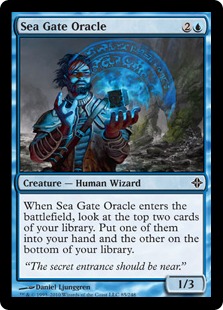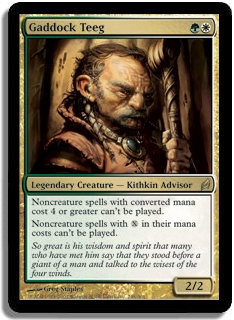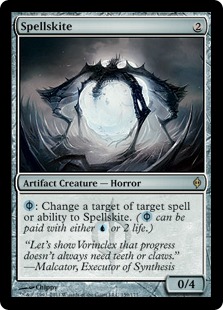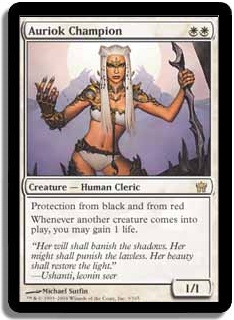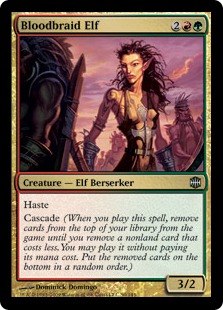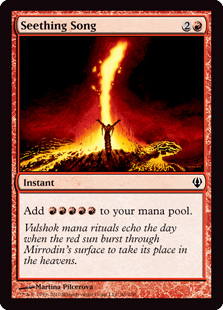(Consider this article the pilot episode; introductions will come later.)
You go to college. You get drunk and party a bit, hit your parents up for money, go to class once in a while, and have that really awkward experience with that girl with purple hair where you… uh, nevermind. However, for the most part you do well and come away with your degree. Now you’re getting ready to apply for that job you’ve been working so hard for. You work extra hard on your resume, polish it up, print out a single copy, and send it off to the business that you think would be perfect for you to start working at.
What’s wrong with the above paragraph? (No, not that; there’s a time and a place for everything, and it’s called college.) It’s not hard to see that printing out a single resume and expecting to get the first job you apply for is quite foolish. Instead, you spend hours refining your resume, printing out dozens of them, and sending them to a wide variety of places. Why? Because you recognize that your best chance of getting a great job is by allowing yourself both as many chances as possible and as many choices as possible. In short, you hedge.
Hedging, as in “hedging your bets,” means opening yourself to a variety of options rather than going all in on a single plan or answer.
Imagine the Standard format from a little while back, when both Vampires and Tempered Steel were fairly popular decks. If you wanted to run a two-mana black kill spell, your options were Doom Blade and Go for the Throat. Clearly, the former is a dead card versus Vampires, while the latter is dead versus Tempered Steel. If neither deck is a large part of the metagame, you would be well served to hedge your removal spells and play two Doom Blade and two Go for the Throat rather than just picking four of one. Of course, there are more considerations to be had even for this simple example, but I imagine you get the idea.
I won a Modern PTQ a few weeks ago with a deck that hedges better than most: Splinter Twin.
Creatures (13)
Lands (23)
Spells (24)
- 4 Sleight of Hand
- 4 Serum Visions
- 3 Remand
- 1 Into the Roil
- 3 Dispel
- 4 Splinter Twin
- 3 Gitaxian Probe
- 2 Izzet Charm
Sideboard

When preparing for a tournament, it is important to look at all of the factors involved. This was one of the first PTQs of the season, and while there were some decklists available from a few Grand Prix and Magic Online Daily Events, it was a fairly young format. Typically, the best way to attack a young format is with a very proactive deck, and it seemed the lists I was seeing were fairly soft to the combo. I was also familiar with the deck, having played it at Pro Tour Philadelphia, and familiarity is not to be underestimated.
I found a Magic Online list that I liked, which was very tight with four Lightning Bolt and four Snapcaster Mage, and sleeved it up. In theory, I liked it a lot; it seemed like the Snapcasters and Bolts would be good defensive measures to slow down opposing decks with creatures and could allow the deck to be more proactive versus slower decks and force them into action. However, after playing with them for a while, it became clear that the Bolts were on the weak side and that the deck did not really want Fire Imp or Sea Gate Oracle. It also became clear that most of the decks in the format were very proactive, so the “put pressure on them” concept never came to fruition. So I scrapped that and began to brew.
Splinter Twin is an interesting deck because unlike other combo decks like Storm and Dredge, the combo does not really take up that much space. Aside from the combo pieces themselves, I knew I wanted to play the full eight cantrips (maybe more) and at least two or three Dispel since it’s the best card to defend the combo. So the only firm slots in the deck were:
4 Deceiver Exarch
2-3 Pestermite
1-2 Kiki-Jiki, Mirror Breaker
4 Splinter Twin
2-3 Dispel
4 Serum Visions
4 Sleight of Hand
This left a lot of room for customization, and it seemed like a wide variety of cards were being played in many different lists, such as Grim Lavamancer, Remand, Izzet Charm, Gitaxian Probe, Flame Slash, Spellskite, Mizzium Skin, etc. All of these cards serve different purposes; this is where hedging comes in.
The biggest problem with these cards (and with the Snapcasters and Bolts) is that you never really want to draw a bunch of them because they all have diminishing returns. The first Lavamancer will do a great job at slowing down any creature-based deck, but the second will do very little. The first Spellskite does an excellent job at protecting the combo from targeted removal, but the second and third do little to help you put together your combo or fight against discard and counterspells. You get the picture. So by hedging each of these effects into different groups of answers to the problems we will face, we can have a variety of options and outs to different situations.
The poster child for this is Izzet Charm. Now, I’m gonna be real with you—Izzet Charm is not a very good card. It is not particularly good at anything and is very overcosted for all three modes (with each having a one-mana counterpart). Yet this is often a card you see in a variety of decks as a one- or two-of. Why? Because Izzet Charm is the perfect hedge card. Many Magic cards offer either power or versatility, and Izzet Charm can get away with just being versatile. It can buy you time by killing that Dark Confidant or Deathrite Shaman or better yet answer a Gaddock Teeg. It can counter that Birthing Pod or Karn Liberated. Worst-case scenario it can dig for your combo or answers to your opponent’s hate post-sideboard.
The last hedge card to make it into the maindeck was Into the Roil because part of hedging is making sure you are always drawing live. While not a spectacular card on its own, just having one Into the Roil in your 60 means that even if you play versus some stupid Tezzeret, Agent of Bolas / Torpor Orb deck or if your Pod opponent manages to get a Linvala, Keeper of Silence in play, you are always drawing live. This is an important thing to have in a deck with so much card filtering and a two-card combo.
The hedging continued with the sideboard. Having a mix of Grim Lavamancer, Pyroclasm, and Flame Slash against a deck like Birthing Pod is much preferred to having four of one of them because they answer different things. Lavamancer and Pyroclasm are better cards against Pod except when they have a Linvala or Spellskite, which Flame Slash or Into the Roil can then take care of.
Mizzium Skin and the extra Spellskite help hedge against Abrupt Decay, while the Vendilion Cliques can give you some play versus your combo opponents. Ancient Grudge does what you expect it to, but it can also serve as an extra answer to any Torpor Orbs or Spellskites that will be thrown at you. Blood Moon is another good card to hedge, as it is also a card with diminishing returns; you don’t want to turn into a Blood Moon deck post-board that is just trying to stick a Blood Moon as soon as possible, but it is a powerful tool against some decks that can severely slow them down while you assemble the combo.
What I found most interesting about the deck is how well the combo naturally hedges—different combinations of the combo can defeat many of the hate cards that will be thrown at you. If they have a Gaddock Teeg, Kiki-Jiki, Mirror Breaker can get through no problem. If they have a Spellskite, you can use Kiki-Jiki on a Deceiver Exarch, and because both Kiki-Jiki and Deceiver Exarch specify “a creature you control,” Spellskite can do nothing. If they have a +1’d Jace, Architect of Thought or a Soul Warden effect in play, you can make use of Pestermite’s two power to circumvent both of those. There are many more examples you will stumble across if you look for them.
When it comes to hedging, it’s not just in the deckbuilding process that it’s important; you also need to be very aware of how you are sideboarding your hedge cards. Unless you have done some excellent scouting (which is something you should be doing if you are playing a combo deck in a major tournament), you will never have perfect information on what your opponent is going to be bringing in against you, and want to make sure you leave yourself outs. If you won game 1, you can be a little riskier with your sideboarding, but if you lose game 1 or are going to game 3, you need to make sure you are not drawing dead to some random sideboard card. My only loss in the Swiss of the PTQ was versus Domain Zoo because I had boarded out my Izzet Charms and he played a Gaddock Teeg that I could not find a way to kill in time.
Most of this article was written before the bannings happened, but at first glance they seem to benefit Splinter Twin. Jund was a disruptive deck with a fast clock, a solid amount of discard, and one of the better cards against you in Abrupt Decay. I don’t think it was an awful matchup, but unless it gets replaced in popularity by a deck that is even better against you, I think this is a gain. Storm being removed from the format however is fantastic for Twin since it removes the only combo deck in the format that is both a turn faster than you and difficult for you to interact with.
If you want to play Splinter Twin at your next Modern event, here is the list I would start with:
Creatures (13)
Lands (17)
Spells (30)
- 2 Mountain
- 4 Island
- 4 Sleight of Hand
- 4 Serum Visions
- 3 Remand
- 1 Into the Roil
- 3 Dispel
- 4 Splinter Twin
- 3 Gitaxian Probe
- 2 Izzet Charm
Sideboard

Remember, the thing about hedge cards is that they are always changing. Metagame shifts can dictate changing a few cards every week for each event you play in, so don’t fall in love with a particular 75.
And don’t worry, I was making that stuff up about the girl with purple hair.
She had green hair.
Thanks for reading.

